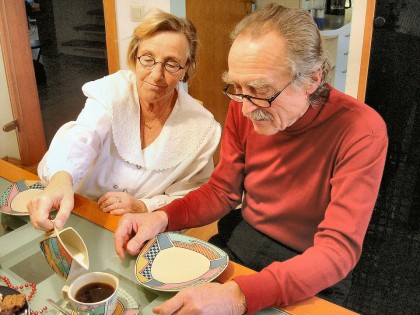Patients with diabetes face daily challenges in managing their blood glucose levels, and it has been postulated that patients could benefit from a system providing continuous real-time glucose readings. Today, The Endocrine Society released a clinical practice guideline (CPG) providing recommendations on settings where patients are most likely to benefit from continuous glucose monitoring (CGM).
The most common way to self-check blood glucose levels is to prick the skin to get a drop of blood, put the blood on a test strip, and insert it in a glucose meter. CGM, though, measures glucose in the interstitial fluid�the fluid between body cells just under the skin. People with both type 1 and type 2 diabetes use the results of blood glucose tests to make decisions about food, medicines and exercise.
"There are some caveats to consider before accepting continuous monitoring of glucose as a routine measure to improve glycemic control in diabetes," said David Klonoff, MD, of Mills-Peninsula Health Services in San Mateo, California and chair of the task force that authored the CPG. "There are still concerns about the high costs of CGM and the accuracy of the various systems available. However, the new CPG shows that CGM can be a beneficial tool to help maintain target levels of glycemia and limit the risk of hypoglycemia."
Recommendations from The Endocrine Society's CPG include:
- Use of CGM with currently approved devices in children and adolescents with type 1 diabetes mellitus (T1DM) because it will assist in maintaining target HbA1c levels while limiting the risk of hypoglycemia;
- Use of CGM devices by adult patients with T1DM who have demonstrated they can use these devices on a nearly daily basis; and
- Refrainment from using CGM alone for glucose management in the intensive care unit or operating room until further studies provide sufficient evidence for its accuracy and safety in those settings.
The Hormone Foundation, the patient education affiliate of The Endocrine Society, has published a companion patient guide to this CPG. The patient guide, which can be found online, explains how CGM works and who could most benefit from its use.
Continue Reading Below ↓↓↓
"Continuous Glucose Monitoring: An Endocrine Society Clinical Practice Guideline," is published in the October 2011 issue of the Journal of Clinical Endocrinology & Metabolism (JCEM), a publication of The Endocrine Society.
Other members of The Endocrine Society task force that developed this CPG include: Bruce Buckingham of Stanford University in California, Jens Christiansen of Aarhus University Hospital in Denmark; Victor Montori of Mayo Clinic in Rochester Minn.; William Tamborlane of Yale University in New Haven, Conn.; Robert A. Vigersky of Walter Reed National Military Medical Center in Bethesda, Maryland; and Howard Wolpert of the Joslin Diabetes Center in Boston, Mass.
Source: The Endocrine Society










